|
|
|
Sort Order |
|
|
|
Items / Page
|
|
|
|
|
|
|
| Srl | Item |
| 1 |
ID:
185263
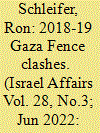

|
|
|
|
|
| Summary/Abstract |
This article examines the violent clashes between Hamas and Israel along the Gaza Fence (30 March 2018–27 December 2019) from a psychological operations (PSYOP) perspective. It shows how Hamas managed, through a skilful combination of mass riots, media manipulation, and quick adaptation to changing circumstances to subvert the strategic priorities of the Israel Defence Forces (IDF), wear down Israeli morale, and erode Israel’s sovereignty in its southern region – all this while deterring Israel from launching a large-scale military operation in Gaza. As such, the Gaza Fence clashes provide an example of a PSYOP-based strategy that can be applied to other border conflict zones, such as Morocco, Saudi Arabia, Mexico, and Islamist insurrections.
|
|
|
|
|
|
|
|
|
|
|
|
|
|
|
|
| 2 |
ID:
125567
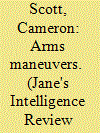

|
|
|
|
|
| Publication |
2013.
|
| Summary/Abstract |
The overthrow of Libyan leader Muammar Ghadaffi in 2011 prompted a flood of weapons into north Africa and the Middle East. Cameron Scott investigates the rise of illicit arms trafficking and its effects on regional stability.
|
|
|
|
|
|
|
|
|
|
|
|
|
|
|
|
| 3 |
ID:
085191
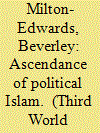

|
|
|
|
|
| Publication |
2008.
|
| Summary/Abstract |
This article outlines the means by which the Palestinian Islamic movement Hamas has developed and implemented a consolidation of power strategy that is inexorably driving it to a state of increasingly authoritarian control in the Gaza Strip. It discusses the factors that have driven Hamas in terms of power seeking as primordial to all radical Islamist movements or as a result of or response to other factors outside its control. The article highlights the concurrent demise of the Fatah organisation in the Gaza Strip as the largest and most visible symbol of secularism. It then reflects on the role of external, including international, actors in accelerating consolidation tactics following the Hamas 'takeover' of power from the Fatah-dominated institutions of the Palestinian Authority (PA) in June 2007. The article aims to demonstrate that Hamas' control in Gaza is an important signpost in terms of developing Islamism in the Middle East region.
|
|
|
|
|
|
|
|
|
|
|
|
|
|
|
|
| 4 |
ID:
121574


|
|
|
|
|
| Publication |
2013.
|
| Summary/Abstract |
BARACK OBAMA encountered an unprecedented welcome when he visited Israel in March. He was greeted at the airport not just by the usual dignitaries but also by a hot new weapon-Israel's Iron Dome missile-defense system against short-range rockets. A battery was stationed only a few footsteps from Air Force One, so the president could walk over and congratulate his hosts on their successful use of the antimissile weapon during Israel's Operation Pillar of Defense in November 2012.
|
|
|
|
|
|
|
|
|
|
|
|
|
|
|
|
| 5 |
ID:
133708
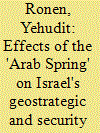

|
|
|
|
|
| Publication |
2014.
|
| Summary/Abstract |
This article explores the identity, characteristics and activities of the jihadist community in the Sinai Peninsula, as well as the ideological affinity, flow of weapons and military cooperation between it and like-minded organizations in the Gaza Strip and beyond. It also analyses the ramifications of these organizations' increased military power and political and ideological stature in Israel's geostrategic environment.
|
|
|
|
|
|
|
|
|
|
|
|
|
|
|
|
| 6 |
ID:
079577
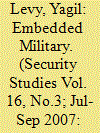

|
|
|
|
|
| Publication |
2007.
|
| Summary/Abstract |
In the summer of 2005, the Israeli military evacuated thousands of Jewish settlers from the Gaza Strip and the northern West Bank in the framework of the Disengagement Plan. Not only was the evacuation swift, but the army also maintained the unity of its ranks and avoided massive refusal of the national religious conscripts who identified with the settlers. It is argued that the effective functioning of the Israel Defense Forces can be attributed to the degree to which it has become embedded primarily within the social networks of the national religious groups that serve within it. The army implemented the evacuation by leveraging the interest of those groups to reinforce the army's status as an apolitical and universal "people's army" by which the groups could preserve their mobility within its ranks. Thus, what prevented the groups from initiating massive clashes with the evacuating troops was their assessment that a confrontation could have undermined the army's status and, by extension, that of the resisting groups - both within the IDF and in civilian society
|
|
|
|
|
|
|
|
|
|
|
|
|
|
|
|
| 7 |
ID:
129330
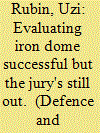

|
|
|
|
|
| Publication |
2012.
|
| Summary/Abstract |
The "Iron Dome" anti-rocket active defense system was first used by Israel in April 2011 with great technical success. This prompted defense officials to finally make public the strategic objectives and limitations of the system, which, until then, had not been divulged. It also expanded the public debate on missile defense from one that focused on the threat to Sderot and the Gaza envelope communities to a debate that included the threat of longer range rockets on larger cities deep within Israel. It can reasonably be concluded that the Iron Dome system has succeeded in saving lives and reducing damages, thus providing more flexibility to the political leadership for containing the fighting with the Hamas government in Gaza.
|
|
|
|
|
|
|
|
|
|
|
|
|
|
|
|
| 8 |
ID:
139999
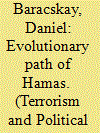

|
|
|
|
|
| Summary/Abstract |
Of the two major Palestinian factions, Hamas has demonstrated that it is more radical and willing to use acts of terrorism than Fatah. While some arguments have made the case that Hamas has become more moderate in light of efforts to develop stable institutions of government and societal organizations, there has not been conclusive evidence of this ideological shift. In fact, the continued adherence to the Muqawama (resistance) Doctrine represents a decisive facet of the movement's enduring pledge to nullify the state of Israel through a prolonged war of attrition. This article examines the role of political pragmatism in the evolution of Hamas. First, it discusses why the moderation argument alone does not provide an adequate understanding of the movement's evolution, especially since it continues to embrace the use of terrorism and violence as facets of Islamism and as an extension of the Muqawama Doctrine. Second, rather than solely using the moderation argument, this article offers an alternative approach which considers how the combination of strategic policy approaches implemented by Hamas has reflected the role of pragmatism in pursuing its domestic and foreign policy agendas, which are intertwined with the values of the Muqawama Doctrine.
|
|
|
|
|
|
|
|
|
|
|
|
|
|
|
|
| 9 |
ID:
082289
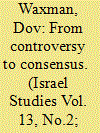

|
|
|
|
|
| Publication |
2008.
|
| Summary/Abstract |
For many years, the debate over whether Israel should withdraw from the West Bank and Gaza dominated Israeli public discourse and aroused intense passions and hostilities. This is no longer the case. This debate is far less divisive and bitter than it once was. In Israel there is broad public support for a withdrawal from much of the occupied territories, and the debate is mostly about the extent, manner, and timing of this withdrawal. This article explains why the policy of territorial withdrawal has become less controversial in Israel in recent years. It examines the debate over the future of the West Bank and Gaza during the years of the Oslo peace process and argues that the debate over territorial withdrawal was then part of a broader cultural conflict. Although this cultural conflict has not been resolved, the issue of territorial withdrawal is no longer at the center of this conflict. The removal of the issue of the territories from this broader cultural conflict has allowed for the emergence of a broad domestic consensus over a policy of territorial withdrawal.
|
|
|
|
|
|
|
|
|
|
|
|
|
|
|
|
| 10 |
ID:
181231
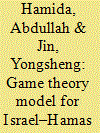

|
|
|
|
|
| Summary/Abstract |
This article offers a game theory-based theoretical framework for explaining the Israel–Hamas indirect ceasefire negotiations in the decade attending the Islamist organisation’s takeover of the Gaza Strip in 2007. It shows that Hamas’s relentless commitment to Israel’s destruction notwithstanding, whenever the two adversaries reached ad hoc agreements, both collaborated (however, indirectly) in maintaining a state of calm. As such, the proposed analytical framework provides a useful tool for conflict management analysis in terms of actions, duration and modes of settlement.
|
|
|
|
|
|
|
|
|
|
|
|
|
|
|
|
| 11 |
ID:
147387
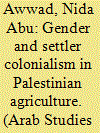

|
|
|
|
|
| Summary/Abstract |
The gendered nature of the agricultural sector is significantly influenced by the political and socio-economic and cultural structure of any society. The division of labor between males and females within the family farm is seriously affected as a response to economic pressures along with the impact of other restrictions imposed by predetermined gender roles. In the Palestinian context, economic pressures were created mainly by the structural transformation in Palestinian agriculture following the Zionist settler colonization of Palestine, along with other minor factors related to the Palestinian neoliberal economic policies dictated by the international financial institution and Zionist interests. This article argues that the gendered nature of the Palestinian agriculture sector has been transformed and has promoted women's exploitation as follows: First, restructure of the agricultural employment by the decline of both women's and men's employment of the total Palestinian labor force within serious exploitive and fluctuating conditions; second, changes in tasks and division of labor, women's property rights for agricultural land resources and services provided by the Palestinian Authority; and finally increasing women's burden by increasing their time allocation for agricultural tasks. The data presented in the article are based on a comprehensive analysis of secondary information on Palestinian agriculture, and primary data collected in 2010 with the help of a few households case studies (life history) from two locations in the central region of the West Bank.
|
|
|
|
|
|
|
|
|
|
|
|
|
|
|
|
| 12 |
ID:
124970
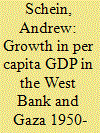

|
|
|
|
|
| Publication |
2013.
|
| Summary/Abstract |
This paper examines the growth of per capita GDP in the West Bank and Gaza Strip (WBG) from 1950 to 2005. Data from Israel's Central Bureau of Statistics and the World Bank is integrated with Angus Maddison's estimates of per capita GDP of the WBG and Israel to produce new estimates of per capita GDP for the WBG from 1950-2005 in 1990 international dollars. With these new estimates, it is possible to compare the growth in WBG from an international perspective. One finding is that from 1968 to 1999 the economic growth in WBG was the tenth highest in the world.
|
|
|
|
|
|
|
|
|
|
|
|
|
|
|
|
| 13 |
ID:
113516
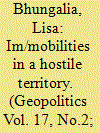

|
|
|
|
|
| Publication |
2012.
|
| Summary/Abstract |
This article examines the biopolitical dimensions of conflict manifest in Israel's disengagement from the Gaza Strip. Exploring a managed relation between life and death largely unaddressed in Foucault's conception of biopower, it contends that Israel's "disengagement" can be seen as a more sophisticated, flexible form of engagement that does not disinvest in or abandon life, but actively regulates it. Close analysis of emerging tactics of population control in Gaza illustrate that neither a "pure" politics of life or death emerges; rather, a more complex management of the two is achieved through the modulation of crucial life-sustaining and life-eliminating flows into and out of the territory. This paper links biopolitical practices of mobility regulation to the ways in which life is enabled, constrained and denied for those in a territory designated as "hostile." Thus, it directly connects the biopolitical dimensions of conflict to territory and the geopolitical violences of territoriality.
|
|
|
|
|
|
|
|
|
|
|
|
|
|
|
|
| 14 |
ID:
154297
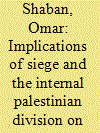

|
|
|
|
|
| Summary/Abstract |
The effects and implications of the siege, internal Palestinian divisions, boycotts by the international community and three Israeli wars have left Gaza in a catastrophic situation on the political, economic and social levels.
|
|
|
|
|
|
|
|
|
|
|
|
|
|
|
|
| 15 |
ID:
128089
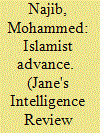

|
|
|
|
|
| Publication |
2012.
|
| Summary/Abstract |
With its strong focus on nationalism, the militant Islamism group has become a major challenger to Hamas's authority in the Gaza Strip. Mohammed Najib examines the rise of Palestine Islamist Jihad and its armed wing that has links to Syria and Iran
|
|
|
|
|
|
|
|
|
|
|
|
|
|
|
|
| 16 |
ID:
080321
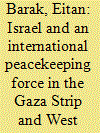

|
|
|
|
|
| Publication |
2007.
|
| Summary/Abstract |
Following the establishment of an apparently successful peacekeeping operation
(PKO) in South Lebanon after the July 2006 war, the idea of deploying a similar operation
in the Israeli-Palestinian was raised by European leaders and the Palestinian
Authority. Israel was quick to reject this proposal. However, the June 2007 Hamas
seizure of power in the Gaza Strip has softened this stance, with Israel reappraising
the issue. Based on experience with the two peacekeeping forces (UNDOF and
UNIFIL), the article assesses the potential impact of a Palestine-oriented PKO for
Downloaded By: [Inst for Defence Studies & Analysis] At: 07:12 18 February 2008
Israel. The article defines the most relevant operational functions for such a PKO,
specifically: to make defection difficult, to increase confidence in the arrangement,
and to serve as a conduit for communication between the sides. The article then
reviews recent precedents for success, explaining why UNDOF succeeded in fulfilling
expectations, whereas UNIFIL has not. By exploring the reasons for Israel's opposition
to another PKO, the article elaborates on the salience of the parties' ability to
suppress violence. A key factor in Israel's decision should be whether Palestinian
entities (in Gaza or the West Bank) have the capacity to control violence or will
apply it. In its absence, Israel's troubled experience with UNIFIL should serve as
the relevant guide.
|
|
|
|
|
|
|
|
|
|
|
|
|
|
|
|
| 17 |
ID:
183987


|
|
|
|
|
| Summary/Abstract |
The Israeli navy prepares to confront Arab non-state actors, mostly Hamas and Hezbollah. Hezbollah might attack Israel’s sea lanes in the Mediterranean Sea, while both Hamas and Hezbollah might strike Israel’s natural gas rigs and the Israeli coastline, where most of the Jewish state’s population and infrastructure are located. The Israeli navy will support ground forces by gathering intelligence and by striking targets. Yet, the Israeli navy does not have significant firepower so the IAF will assist in this matter. The Israeli navy also lacks the ability to conduct vast amphibious operations. The IDF can invest in this field sicne such a maneuver can be a game changer.
|
|
|
|
|
|
|
|
|
|
|
|
|
|
|
|
| 18 |
ID:
133686
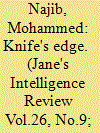

|
|
|
|
|
| Publication |
2014.
|
| Summary/Abstract |
Following the withdrawal of Israel's ground from the Gaza Strip, but with the violence continuing, relations between Hamas, the Palestinian Authority and Tel Aviv have reached a significant juncture. Mohammed Najib explores the dynamics.
|
|
|
|
|
|
|
|
|
|
|
|
|
|
|
|
| 19 |
ID:
132209
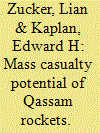

|
|
|
|
|
| Publication |
2014.
|
| Summary/Abstract |
In spite of the bombardment of southern Israel by thousands of Qassam rockets fired from the Gaza Strip, comparatively few people have been injured or killed. This has led some observers to dismiss Qassams as more of a symbolic than lethal threat. However, southern Israeli towns feature robust civil defense systems that include safe rooms, bomb shelters, early detection alarms, and missile defense. How many casualties would occur were such systems not in place? This article applies shrapnel-casualty and spatial allocation models to the population of the southern Israeli town of Sderot to estimate casualties per randomly aimed rocket fired into the unprepared town; that is, in the absence of civil defense (technical details appear in the Appendix). Assuming an injury radius of only 5 meters from impact, the modeled expected casualties per rocket are between three (best-case) and nine (worst-case) times higher than Sderot's observed casualties-to-rocket ratio, suggesting that Qassam-like terror attacks on unprotected urban locations could prove much more serious than what one would expect based solely on the observed number of casualties in Sderot.
|
|
|
|
|
|
|
|
|
|
|
|
|
|
|
|
| 20 |
ID:
084264
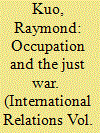

|
|
|
|
|
| Publication |
2008.
|
| Summary/Abstract |
Just war theorists have had difficulty assessing the moral character of occupations, since they often fail to engage with the broader mechanisms and ethical issues of control and power inherent to that state of conflict. These challenges, however, cut to the heart of many of the just war tradition's assumptions, requiring new conceptualizations of its principles and rules for appropriate conduct. This article takes a first step in that direction, recasting the tradition to encompass a wider view of threat and violence in military occupations, using the Israel-Palestine conflict as an illustrative case.
|
|
|
|
|
|
|
|
|
|
|
|
|
|
|
|
|
|
|
|
|